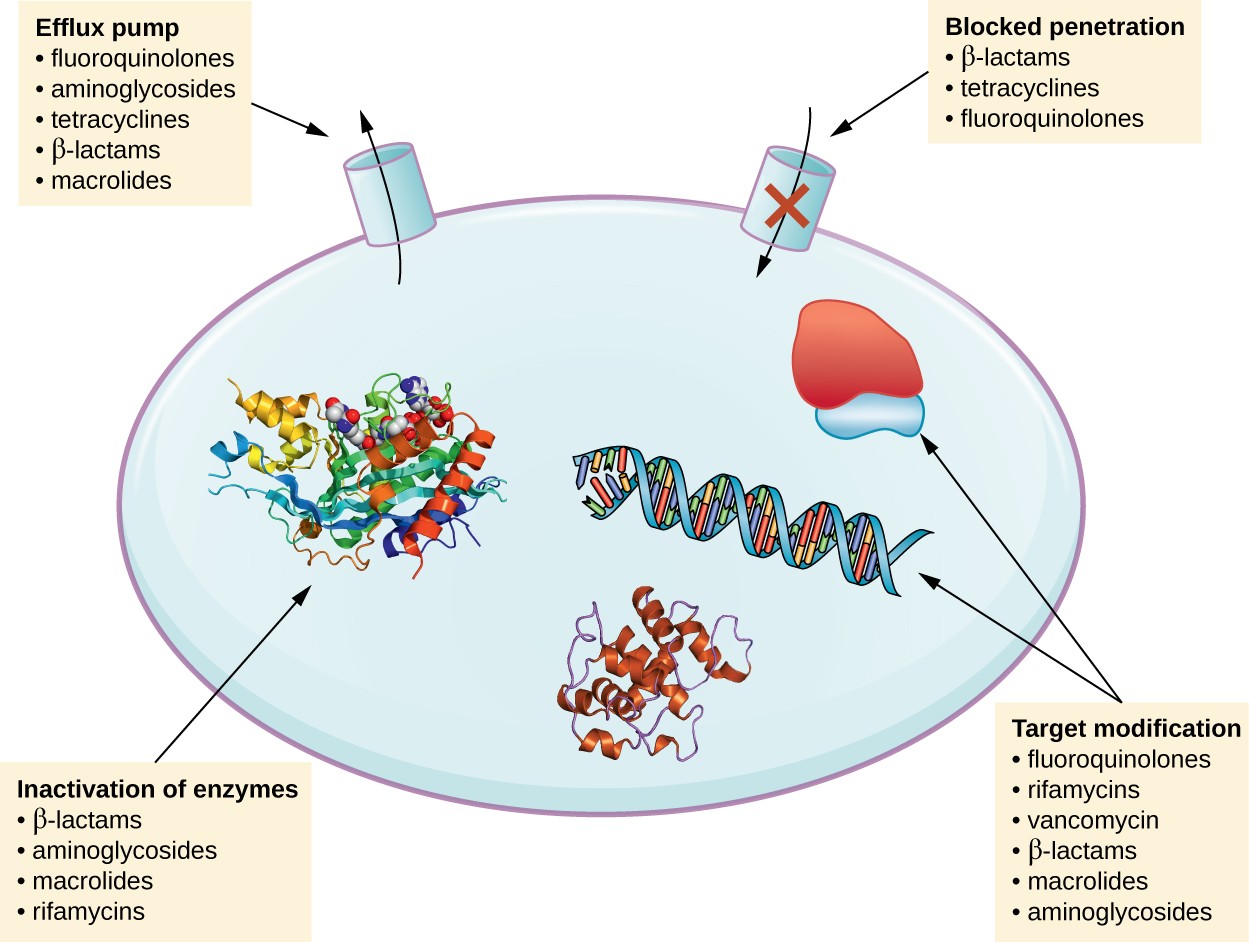Describe Some Mechanisms Used by Microorganisms on Antibiotic Resistance
Brock Biology of Microorganisms 13th Edition. Full PDF Package Download Full PDF Package.

Mechanisms Of Antibiotic Resistance Download Scientific Diagram
The isolation and genetic characterization of antibiotic-resistant bacterial strains has uncovered many molecular mechanisms of resistance 1 including mutations in the drug target enzymatic.

. However boiling is less. In this narrative review we aim to describe antibiotic resistance in clinical practice settings through population-based studies from different countries reporting the role of misuse of antibiotics in the development of resistance and the. The authors discuss some mechanisms of antibiotic resistance such as changing the antibacterial agents uptake and biofilm formation as well as a wide range of approaches such as developing new generations of antibiotics combination therapy natural.
Mechanisms of antibiotic resistance can be categorized into three groups. All incoming freshmen must complete the following courses within the first two years of hisher program. Brock Biology of Microorganisms 13th Edition.
Describe how microorganisms develop or acquire drug resistance. Human development of antimicrobial drugs. Some careers in biology require advanced or specialized training.
This section describes the variety of chemicals used as disinfectants and antiseptics including their mechanisms of action and common uses. Describe the different mechanisms of antimicrobial drug resistance. In order for plasmids to replicate independently within a cell they must possess a stretch of DNA that can act as an origin of replicationThe self-replicating unit in this case the plasmid is called a repliconA typical bacterial replicon may consist of a number of elements such as the gene for plasmid-specific replication initiation protein Rep repeating units called iterons DnaA.
Aerobic and facultative Gram-positive microorganisms. Boiling is one of the oldest methods of moist-heat control of microbes and it is typically quite effective at killing vegetative cells and some viruses. A short summary of this paper.
In the 1860s British surgeon Joseph Lister 18271912 began using carbolic acid known as phenol as a disinfectant for the. The aim of this review is to describe in detail all current knowledge on the genetic background of A. Chemical modifications to the original antibiotic molecules have been made to increase potency to improve solubility and pharmacokinetics and to evade resistance mechanisms.
Lists of Microorganisms Meropenem has been shown to be active against most isolates of the following microorganisms both in vitro and in clinical infections as described in the INDICATIONS AND USAGE section. The first two years of any major in biology is quite similar. Different microorganisms will respond differently to high temperatures with some.
Second bacteria can protect the antibiotic. First resistance can be achieved by reducing membrane permeability or increasing efflux of the antibiotic and thus preventing access to the target. These parameters are often used to describe sterilization procedures that use high heat such as autoclaving.
To prevent infection by phages bacteria have evolved a diverse range of resistance mechanisms. Cross resistance is sometimes observed with isolates resistant to other carbapenems. Moineau and colleagues highlight recent work to characterize these resistance strategies and discuss.
The 20th century witnessed the dawn of the antibiotic revolution and is now facing the rising phenomenon of antibiotic resistance. In nature microbes are constantly evolving in order to overcome the antimicrobial compounds produced by other microorganisms. BIOL111 BIOL112 BIOL213 BIOL 214 CHEM119 CHEM120 CHEM227237 CHEM228238 MATH147 or 151 or 171 and MATH148.
Antimicrobial resistance is not a new phenomenon. This principle was first applied empirically to modify sulphanilamide and achieved great success with modifications to β-lactams. In the 1800s scientists began experimenting with a variety of chemicals for disinfection.
Because the early identification of causative microorganisms and their antimicrobial susceptibility patterns in. Nowadays modifications also can be tailored based on knowledge.

Mechanisms Of Antibiotic Resistance In A Gram Negative Bacterium A Download Scientific Diagram

Antimicrobial Resistance Mechanisms In Gram Negative Bacteria And Ways Download Scientific Diagram

Schematic Diagram Highlighting The Antibiotic Resistance Mechanisms Download Scientific Diagram

0 Response to "Describe Some Mechanisms Used by Microorganisms on Antibiotic Resistance"
Post a Comment